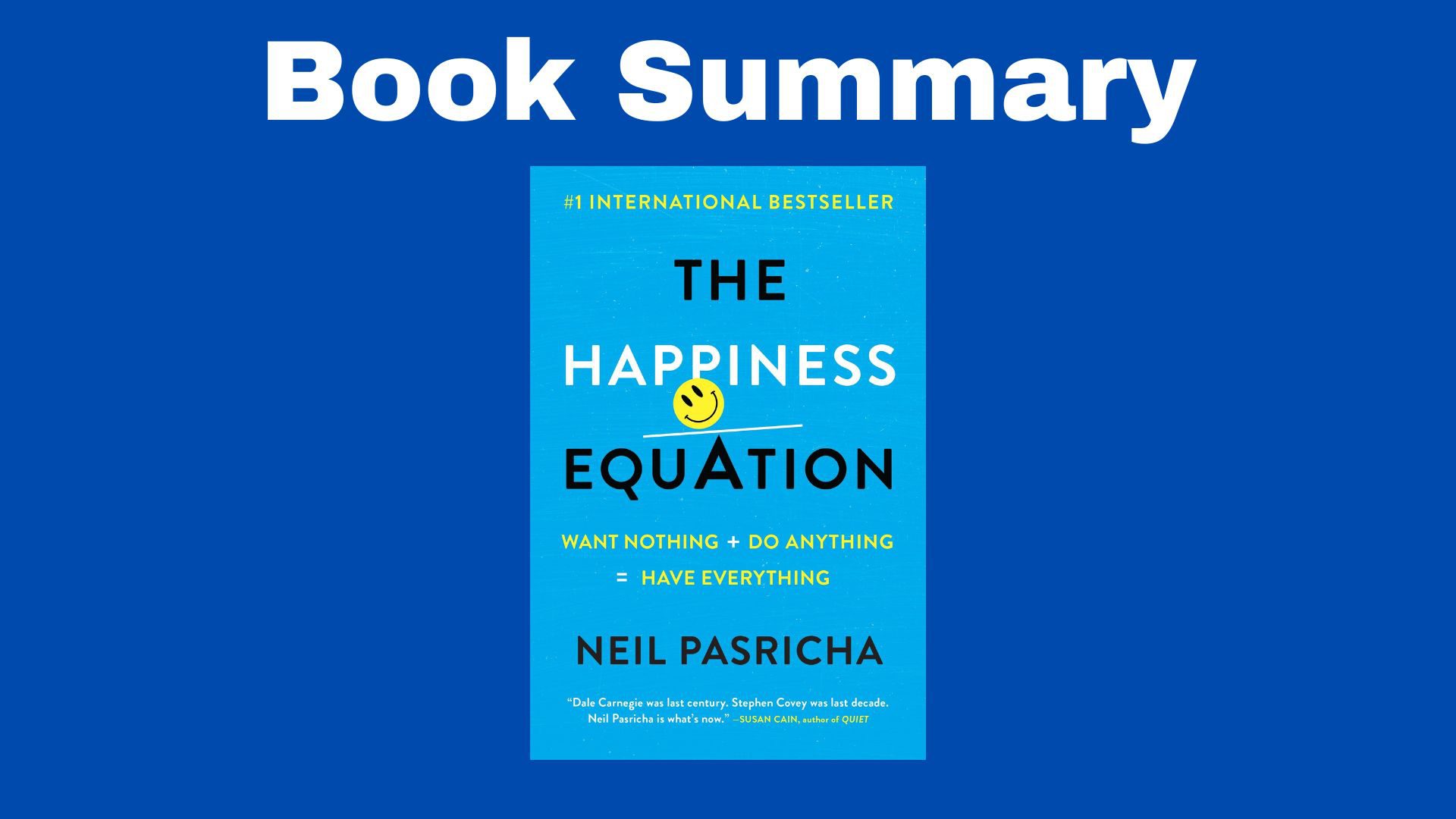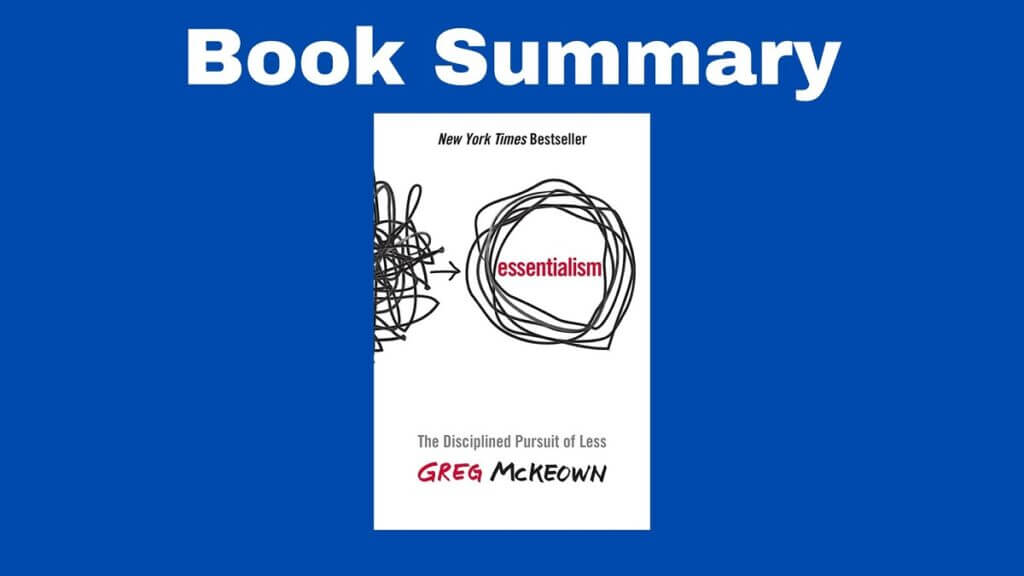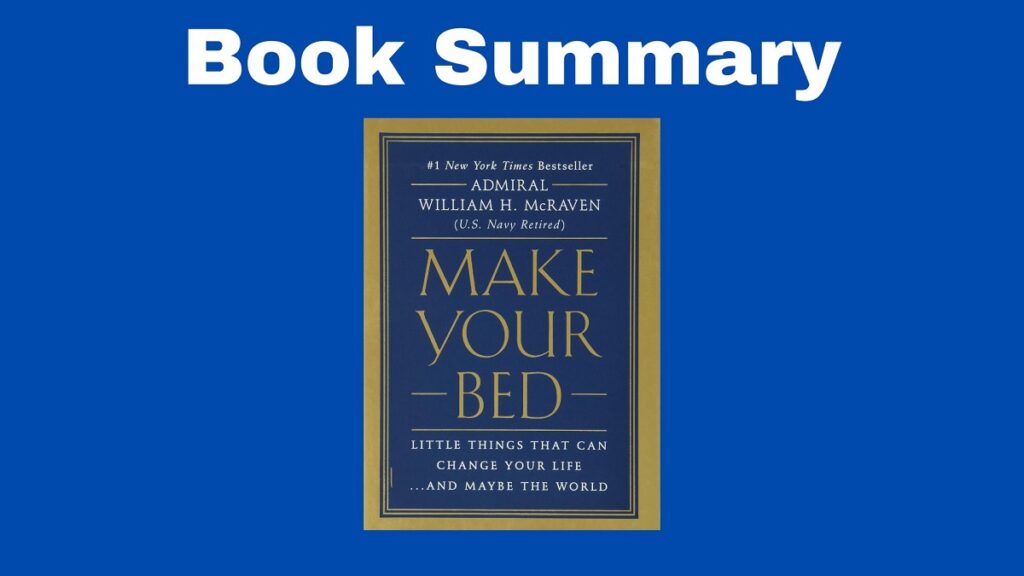The Book in Three Sentences
In The Happiness Equation, best-selling author Neil Pasricha shares his formula for a happy life. The idea is to want nothing and do anything in order to achieve everything. In the book, this equation is presented in the form of nine secrets to happiness.
The Happiness Equation Summary
Want Nothing
Secret #1: Be Happy First
Chapter 1: 6 Words that Will Forever Change How You See Happiness
Working hard in order to be successful and then happy is the regressive model that most people learn from a young age. This doesn’t work because we’re constantly changing our goals so we never get to be happy. Instead, be happy and do great work. This, in turn, will lead to success. Always be happy first.
Chapter 2: The Single Biggest Reason It’s So Hard to Be Happy
Don’t be stuck on negative thoughts. This is hard because we’re wired to deal with a short existence and a highly competitive world. Even if you have enough, you wouldn’t be comfortable for too long because we’re built to survive, and surviving means finding problems in our surroundings. This explains why we’re always stressed or unhappy. This is nature’s way to keep us alert at all times.
Chapter 3: The One Thing Your Doctor, Teacher, and Tom Hanks All Have in Common
To a certain extent, we’re all paranoid. Seeing the world around us and finding problems is how we’ve survived this long.
Chapter 4: How Much Can We Control?
Our attitudes are important. We can’t change our past, and we can’t predict the future, but we can control how we act when something happens. How we see the world determines our happiness. In other words, what determines our happiness is internal rather than external.
Chapter 5: 7 Ways to Be Happy Right Now
There are seven ways to learn to be happy and the author calls these the Big 7:
- Be physically active
- Write for twenty minutes about a positive experience
- Do five random acts of kindness per week
- Disconnect from the internet adn technology often to recharge more quickly
- Be fully engaged in an activity you love
- Practice mindfulness meditation
- Write down three to five things you’re grateful for
Chapter 6: A Final Lesson from the Convent
By having a positive attitude, you can live longer. By being happy today, you can have more chances to live longer.
Secret #2: Do It for You
Chapter 1: The Only Goal You Set that Matters
Wanting more is natural, but never lose sight of the goals you set for yourself. Internal goals are more important than external ones because are the only kind of goals that make you a better person. The problem with external goals is that’s easy to keep setting more.
Chapter 2: What’s the Biggest Problem with External Goals
If you use external motivators to set goals, you’re doing it for others rather than yourself. Also, the problem with external goals is that they are outside of your control.
Chapter 3: 4 Simple Words that Block All Criticism
Whatever it is that you do, do it for you. Never do it for others because you’ll never be done and it’ll never be enough.
Chapter 4: Why Your Dream Job Could Be the Worst Job You Ever Have
There are two types of motivation: intrinsic, which is internal, and extrinsic, which is external. To perform better, you need intrinsic motivation, so you have to do it for yourself.
Chapter 5: The 3 S’s of Success

- Sales success: your product sells well
- Social success: you’re a success among your peers, critics, or people you respect
- Self success: you achieved what you set out to achieve which makes you proud, happy, and satisfied.
It’s impossible to have all three because usually, two corners of the triangle prevent the third one from happening. You have to determine which of the 3 S’s of success you want.
Chapter 6: The Sad and Unfortunate Reason We Listen to Critics in the First Place
Don’t be concerned with external measurements because this can become your weakness. Usually, we rely on external rankings because we lack confidence.
Chapter 7: The Secret Scribble to Increasing Your Confidence
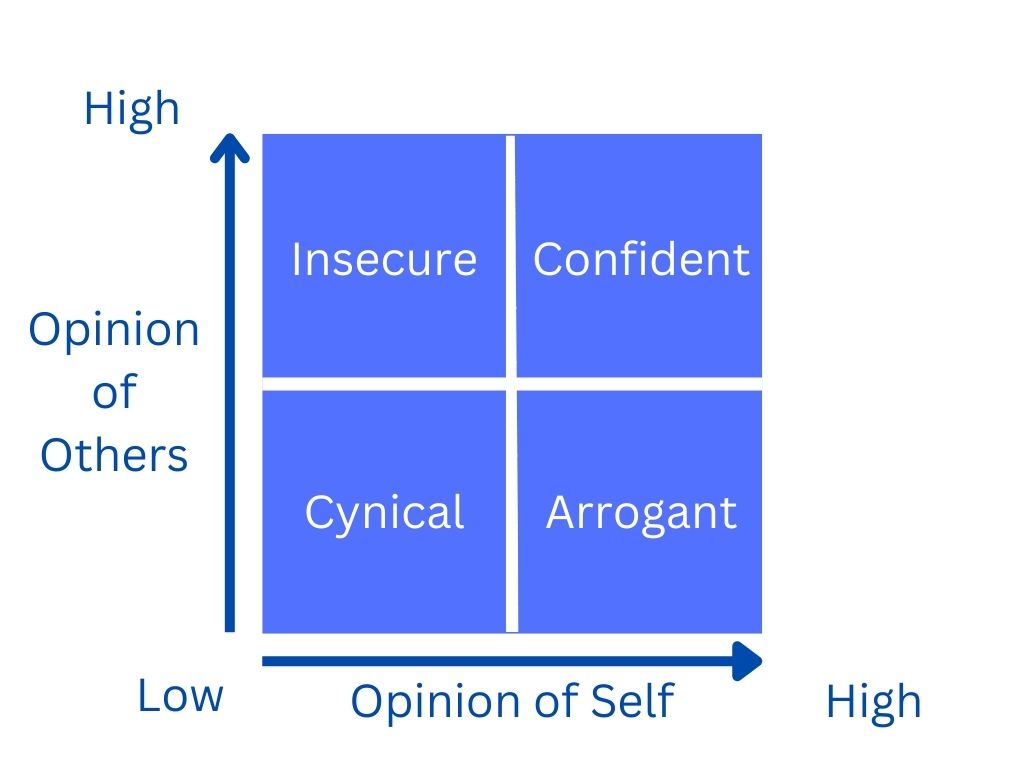
Be confident which means you should have a high opinion of yourself and others.
Chapter 8: 3 Simple Steps to Self-Acceptance
To achieve a high opinion of yourself, follow three steps:
- Hide: don’t be afraid of who you are
- Apologize: don’t apologize because it’s a form of self-judgment
- Accept: be clear and simple to finally accept yourself
Chapter 9: How Does Buddha Use This Secret?
When dealing with other people, don’t become angry or feel insulted. Don’t let others hurt you. If anything, let them hurt themselves. Their anger is theirs to deal with.
Chapter 10: What Does a Message Secretly Hidden Under Wimbledon’s Centre Court Show Us?
There’s a passage from Rudyard Kipling’s poem “If” at Wimbledon.
“If you can meet with triumph and disaster and meet those two impostors just the same”
Winning and losing are the same because regardless of the final outcome, the world will go on. In the grand scheme of things, you don’t matter. Whatever you do, do it for you.
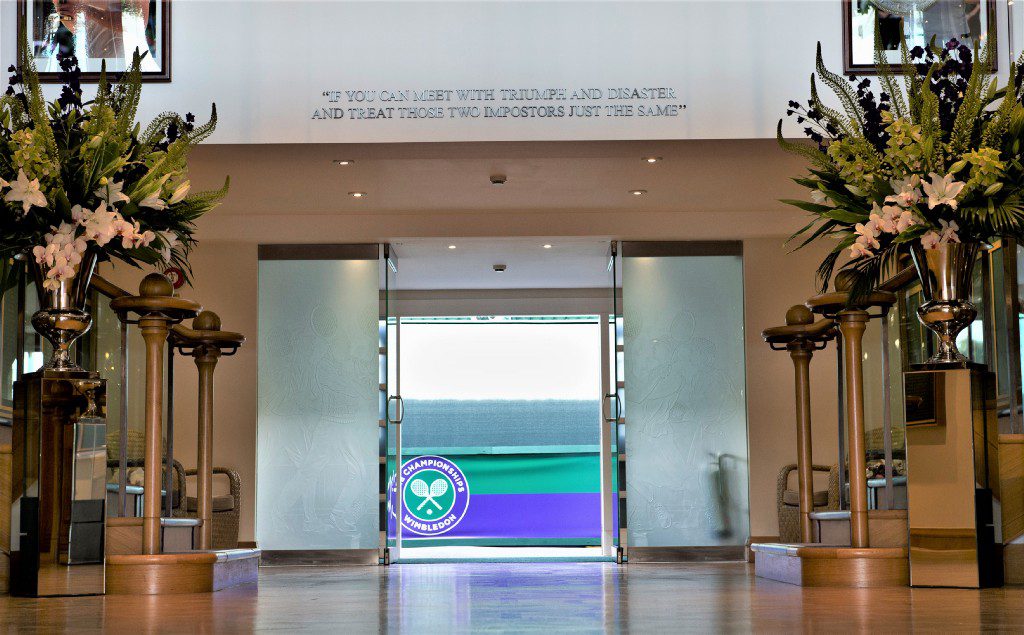
Chapter 11: “I Don’t Stand Back and Judge… I Do”
Do it for you. External rewards hide your intrinsic motivators. Don’t try to appeal to those judging you. Take risks.
Secret #3: Remember the Lottery
Chapter 1: The First War You Are Fighting Every Day
The Amygdala is a part of the brain that’s constantly scanning our surroundings for problems and threats. When a threat is identified, your body enters fight or flight mode. You can’t control your emotions, but you can control your reactions to those emotions. The prefrontal cortex is the rational part of our brain where our complex thoughts live. The amygdala and the prefrontal cortex are in an endless war with each other.
Chapter 2: The Second War You Are Fighting Every Day
Another war is between more and enough. We went from having needs to having desires and companies have taken advantage of this by creating new things for people to consume.
Chapter 3: The One Thing Many Billionaires Want But Cannot Have
We all have one thing that most billionaires will never have: enough.
Chapter 4: What Does a Greek Philosopher Have in Common with the Rolling Stones?
Epictetus believed that wealth isn’t about having too many possessions but having few wants. The Rolling Stones echo this sentiment in their hit song “You Can’t Always Get What You Want”.
Chapter 5: When Does Making a Million Dollar Feel Like Nothing?
When you desire something, remember you already have enough. Having more doesn’t mean you’ll feel better after getting it.
Chapter 6: The Classic Tale of the Mexican Fisherman
Chapter 7: How to Use the Three Words on Your Very Worst Days
When you’re feeling frustrated, remember the lottery. We’re living in the only place that can sustain life. We’re among the wealthiest and healthiest generations to ever grace this planet. When you’re feeling frustrated, take a step back and remember the lottery. You’ve already won.
Do Anything
Secret #4: Never Retire
Chapter 1: The Terrible Tragedy of Mr. Wilson
Mr. Wilson was the author’s guidance counselor. He loved his job but was forced to retire at sixty-five. The next week after retirement, he died.
Chapter 2: Thomas Jefferson and Teddy Roosevelt Agree on This
For life to have meaning, you have to work. To be happy and be of use to others, you have to work. Don’t give up, don’t stop doing, and never retire. Find your Ikigai.
Chapter 3: What Can the Healthiest One-Hundred-Year-Olds in the World Teach Us?
Okinawans live longer, happier, and healthier than people in the rest of the world. This is the region where most people over a hundred years old live. Their secret is to stop eating when they’re 80% full, they’re part of a close-knit community, and they never retire. They have an Ikigai, which is a reason for living and a compass to know where we’re headed.
Chapter 4: The Single Greatest Lesson We Can Learn from Alice’s Adventures in Wonderland
At one point in Lewis Carrol’s story, Alice finds the Cheshire cat. This is their exchange:
“Would you tell me, please, which way I ought to go from here?” Alice said.
“That depends a good deal on where you want to get to.” The cat replied.
Alice added “I don’t much care where –”
“Then”, said the cat, “it doesn’t matter which way you go.”
― Lewis Carroll, Alice in Wonderland
Chapter 5: The Horrible Idea the Germans Had that Ruined Things for Everybody
Retirement was a German invention and it was a way to free up jobs for younger people. Back in 1889, when the concept of retirement was born, the average life span was sixty-seven years old, but thanks to medical advancements, people live longer than ever. Slowly, retirement became synonymous with rest and relaxation. Retirement is a relatively new Western concept and it’s broken. Never forget that work gives us direction.
Chapter 6: “When You’re Through Changing, You’re Through”
Never retire. If you’re done learning, you’re through. Work is more than a paycheck because it enriches our life. The best parts of work are the things we get for free. Not working gives you a sense of hopelessness and emptiness.
Chapter 7: The 4 S’s of Work
This is what works gives us:
- Social: humans had to socialize because otherwise, they’d die. Nowadays, social connections are a big source of our happiness.
- Structure: everyone gets 168 hours a week and work gives us structure. Ideally, we’d divide those 168 hours into three buckets of 56 hours each. One of those buckets is for sleeping, the other one is for working, and the final one is to fulfill our passion.
- Stimulation: these are the simple joys in life.
- Story: you can bring your own story to life. Work is about being part of something bigger than the sum of its parts. That’s the story you (or the company you work for) are trying to tell.
Chapter 8: The Dream We All Have that Is Completely Wrong
Retirement isn’t a dream we want or an ultimate goal. We want to do something we love and we want challenges.
Secret #5: Overvalue you.
Chapter 1: What Does Havard Do for Your Salary?
The sense of opulence you get when you visit Harvard is palpable. Everyone there is either rich or about to be. People who graduate from Havard make five times as much as the average American, but does the university actually make you rich?
Chapter 2: “Is Everyone Nuts?”
The author went to Harvard. After he graduated, he called his friends from university to see how they were doing and realized that all of them were working eighty to one hundred hours a week. Were they really making that much money?
Chapter 3: The Single Calculation to Find Out What You Really Make
Most jobs are paid by the hour. What’s the point of earning double or triple than most people if you’re going to be doing double or triple the work? The money you make should pay for small luxuries (such as going to restaurants or going on vacations), but having less time means having less fun. Suddenly, the only things you’re doing are working and sleeping. There’s nothing wrong with this, but only you can determine if this is the kind of life you want.
Chapter 4: How Does a Teacher or Retail Assistant Manager Make More than a Harvard MBA?
To determine how much you make, you have to think about how much you’re paid per hour. Keep this number present. Only spend time working on the things you enjoy.
Secret #6: Create Space
Chapter 1: Do This and You’ll Suddenly Have Space Back in Your Life
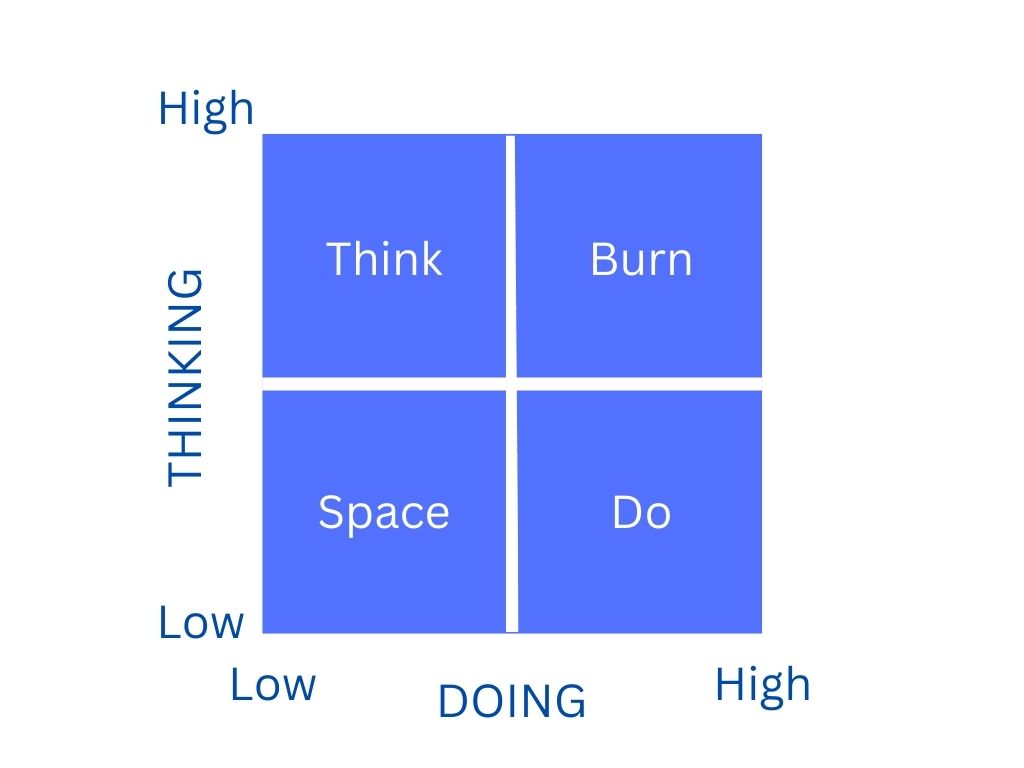
The space scribble teaches you to manage high doing and high thinking. Ideally, you’d alternate between thinking and doing.
Chapter 2: The 3 B’s of Creating Space
Ideas usually come to us in bed, in the bathtub, or on the bus.
Chapter 3: This Is How NASA, Alfred Hitchcock, and Nicole Katsuras Use This Secret
When the Hubble space telescope broke, NASA doubled down to save its reputation. They trained people, flew them to outer space, and repaired the telescope. But as they were preparing everything, they didn’t have a solution to their problem: they didn’t know how to attach the mirror inside the telescope. A NASA engineer came up with a solution while taking a shower. Stop doing and start thinking. Famous filmmaker Alfred Hitchcock and abstract painter Nicole Katsuras did something similar when they were stuck.
Chapter 4: Removal 1: How to Make Every Decision at Twice the Speed
Fewer options equal faster decisions. The less time we spend on decisions, the more time we can spend doing anything else. Barack Obama, Mark Zuckerberg, and Bill Gates wear the same outfit every day. By choosing what to wear beforehand, that’s one less decision they have to make.
Save “frictional time” by buying clothes in bulk, doing laundry once a month, and deciding what to wear beforehand. Reserve your decision-making energy for what matters. When possible, outsource decisions from your life. Making decisions is exhausting and to recover, you have to eat and sleep. Decision fatigue can lead to poor choices or making no decision at all. A solution can be to create rules for yourself so that you don’t waste time taking decisions in the first place. Ironically, people want to have more options, but having access to those options makes us less happy.
For each decision you have to take on a daily basis, you have to decide which one to automate, regulate, effectuate, and debate. The cost of taking too many decisions is your brain power. There’s a secret to removing our brains from almost all decisions.
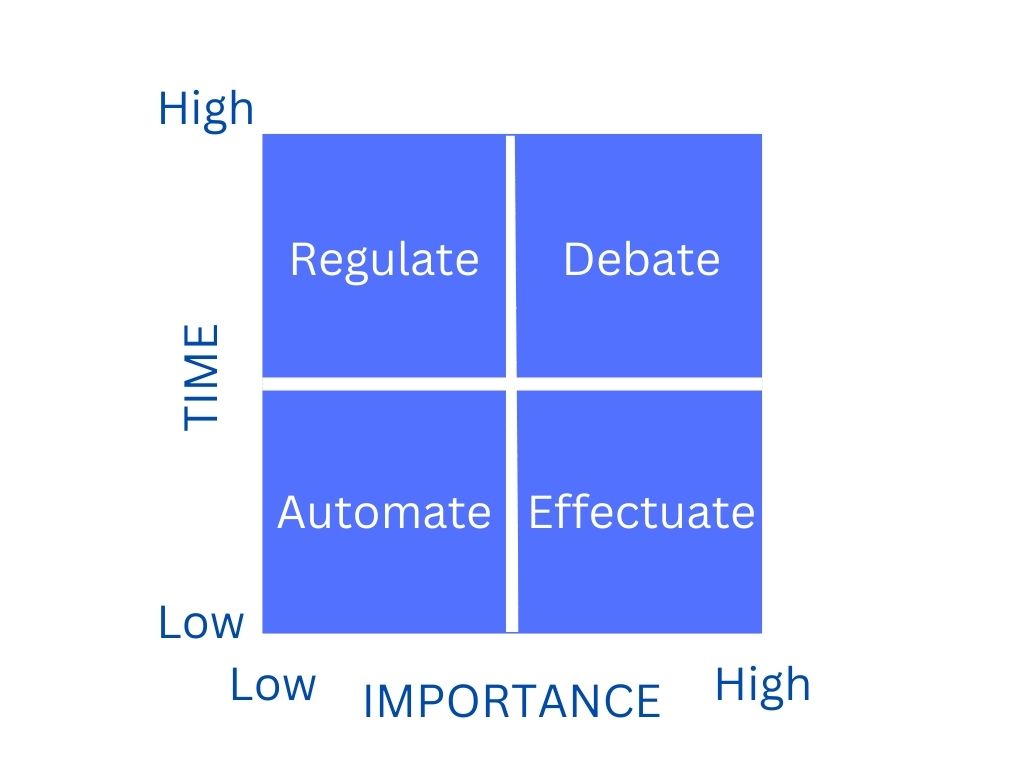
- Automate: automate everything that’s low on time and importance. Examples include buying things, paying bills, and so on.
- Effectuate: low on time, but high on importance. Examples include grabbing your kids from school or eating dinner with the family. You just have to do it, so there are no decisions to make.
- Regulate: high on time, but low on importance. For example, checking email, managing the calendar, or doing chores. Make rules to deal with each of these and follow those rules. For instance, you only allow yourself to check your email for 30 minutes after doing one of your most important tasks for the day.
- Debate: high on time and priority. Debate in your head, discuss with friends and family, and make a list of advantages and disadvantages. Some of the things you’d debate include buying a house or moving. These are the most important decisions you’ll take.
Chapter 5: Removal #2: The Counterintuitive Way to Have More Time
Parkinson’s Law says that “work expands so as to fill the time available for completion”. To be effective, you have to be simple, confident, and clutter-free. When you have less time to do something, you’re focused and organized. Sometimes, creating last-minute panic is the best way to get good results.
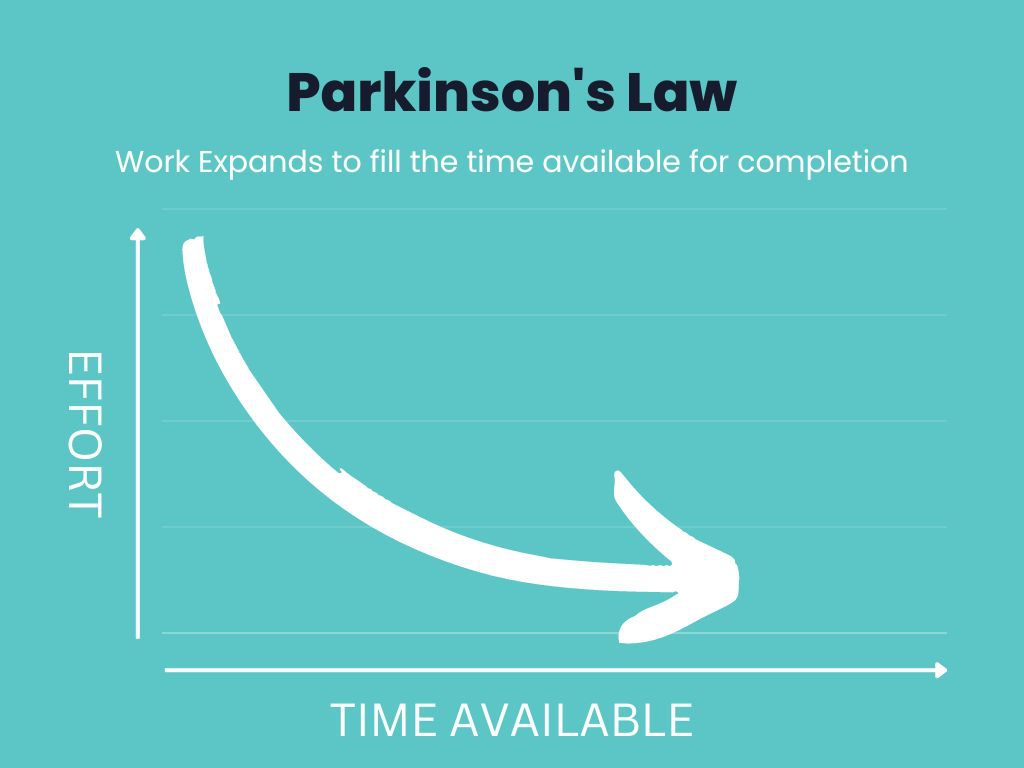
Chapter 6: Removal #3: How to Add an Hour to a Day with Only One Small Change
Your brain is one of the most complex objects in existence, but it can only do one thing at a time. Its only downside is that it needs eight hours of sleep every day, as well as healthy food to recharge. Block access to your brain. You should only let your number one priorities get to your brain.
Never try to multitask. We can’t do more than one task at the same time. What we can do instead is switch our attention from one thing to another which isn’t efficient since this takes mental energy. Multitasking is an illusion.
Interruptions take time away from you because you have to switch from one task to another. Use different strategies to focus, such as removing voicemail, text messages, email reminders, and notifications.
Chapter 7: “What Is This Life if, Full Care, We Have no Time to Stand and Stare?”
We’re busy because we ran out of space and don’t value space as much as we should. To never feel busy again, create space.
- Remove choice
- Remove time
- Remove access
Have Everything
Secret #7: Just Do It
In order to do something, we have to believe we can do it, we need to want to do it, and finally, we do it. Once you understand this, it’s become a virtuous circle. The author calls this the “Do Circle”. Doing one thing will encourage you so much that you’ll feel you can do another one. By starting to do something, you feel motivated.
Chapter 4: How Does Jerry Seinfeld Use This Secret to Write Comedy?
To get things done, revered comedian Jerry Seinfeld writes a joke every day. Using a big calendar, he puts a red X on the day he writes a joke. The idea is to build a chain and never break it.
Chapter 5: It’s Not Easier Said than Done, It’s Easier Done than Said

Chapter 6: The 30-Second Technique to Using This Secret in Your Daily Life
The Gym Clothes Effect is when you have trouble getting out of bed to change into your gym clothes because your clothes are far and it’s easier to stay in bed., Once you put your clothes on, you’re more likely to train and go to the gym. Remove the friction and put yourself in a situation where it’s easier to do something than not do it.
Chapter 7: What Does the Greatest Physicist Of All Time Say?
As Isaac Newton says in the First Law of Physics, once you start doing something you’ll continue.
Chapter 8: The Advertising Slogan Everyone Knows Because It Follows This Secret
Nike started using the “Just Do It” slogan in 1988 and it was a resounding success.
Chapter 9: The Single Greatest Lesson We Can Learn from Home Alone
The author describes the scene where Kevin talks to the old man in the park. Due to an old argument, the homeless man isn’t on speaking terms with his son. Do what scares you. Like Kevin says in Home Alone, “At least you’ll know”.
Secret #8: Be You
Chapter 1: “I Run a Burlesque Dancing Troupe”
Be you and do it for you.
Chapter 2: This is the Most Authentic Person of all Time
Rosey Grier, a player to one of the best defensive lines in the history of the NFL, was authentic. After his football career, he was a bodyguard, an artist, a talk-show host, and a needlepoint aficionado. He even wrote a book called Needlepoint for Men.
Chapter 3: Happiness Is When What You Think, What You Say, and What You Do Are in Harmony
Follow your heart, be OK with your imperfections, and be transparent and vulnerable. Be you. The relationship you have with yourself is the most important relationship you’ll have. By being someone you’re not, you can drown your unique sense of self. Your thoughts, words, and actions should align.
Chapter 4: 3 Simple Tests to Uncover This Secret Inside You
To find your authentic self, answer the following questions:
- The Saturday Morning Test: what do you do on a Saturday morning?
- The Bench Test. Before going to university, a friend of the author went to of the schools he was interested in, sat on a bench for an hour in each school, and listened to random conversations to see what his experience might be like if he attended that university. Immerse yourself in a situation and see your own reaction to see if a decision aligns with your authentic self.
- You’re the average of the people you hang out the most with.
Chapter 5: The 5 Greatest Regrets of the Dying and How to Avoid them
Bronnie Ware is an Australian nurse who took care of dying patients. She noticed that those patients had some common regrets.
- “I wish I had the courage to live a life true to myself, not the life others expected of me”
- “I wish I hadn’t worked so hard”
- “I wish I had the courage to express my feelings”
- “I wish I had started in touch with my friends”
- “I wish that I had let myself be happier”
By being you, you avoid having regrets later in life. Be authentic.
Chapter 6: When There Are No Enemies Within, the Enemies Outside Cannot Hurt You
Pretending to be someone you’re not is exhausting.
Secret #9: Don’t Take Advice
Chapter 1: “Ninety-Seven Percent of Lung Cancer Patients Are Smokers and Ninety-Seven Percent of Smokers Never Get Lung Cancer”
Don’t take advice. Do your research, study, and do the work, but don’t worry about what everyone else thinks. Hear everything, but it’s up to you what to do with it.
Chapter 2: What Can We Learn from the Most Common Advice of All?
Cliches are the most common advice. Like advice, cliches conflict too. The cliche, quote, or piece of advice that resonates with you is because, deep down, you’ve already decided. Don’t take advice, the answer lies within yourself.

